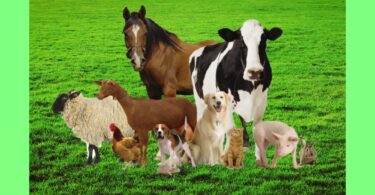A few remarks before you start –
A remedy seldom used is nothing but a badly known remedy. This may happen because it has not been fully proved or was not used very often. Nevertheless, it can be very useful and even life-saving. For such a remedy, there are only a handful of rubrics in your repertory. On the other hand, a polychrest will have thousands of rubrics. If you repertorize with many symptoms, you will mathematically find a polychrest.
There is a simple way to avoid this: Use Hering’s “three legged stool”, or the minimal syndrome of maximal value and paragraph 153 of the Organon.
The technique: You need very few symptoms but they must be:
- Complete, which means sufficient confirmed modalities.
- Reliable, which means actually observed or repeated, underlined in the anamnesis.
- Really understood and well interpreted
- Physiologically and pathologically independent
Then your prescription stems from a solid basis. Let us study this a little:
1) A complete symptom has sufficient modalities, with concurrents, and when possible, with etiology and periodicity as well as time and/or weather conditions.
2) A symptom is reliable when it is objective, in other words when it is actually observed or reported, or when it is subjective, i.e. when it is underlined during anamnesis. Of course, it has to be striking, singular, uncommon and peculiar (Organon § 153), meaning it is idiosyncratic of the patient. A little tip here may confirm your inclination: the good rubric of the repertory has a long title and contains few remedies.
3) The symptom must be well understood and its significance correctly interpreted, according to your patient’s species. For instance, when a man frowns he may be reflecting, or worrying about something. When a cow frowns, she can be dehydrated. A dog who frowns may have tetanus! Eating one’s own fæces is a symptom of serious mental disorder in humans. In dogs, it may be the consequence of a guilty feeling and in a rabbit it is a normal physiological action (cÅ“cotrophia).
4) The symptoms must be physiologically independent. For instance diarrhœa and vomiting result in dehydration and this provides various symptoms or rubrics. Let us see:
• Thirst (576 remedies) with several more or less interesting possibilities (increased, extreme, unquenchable, for large quantities, small quantities often)
• Sunken eyes (130 remedies)
• Skin dryness, perspire cannot (75 R.)
• Old age, premature (48)
• Urination suppressed, retention of urine (186 R.)
In this case, looking old prematurely would be the best choice, as long as the symptom can really be observed.
Clinical examples
Hering’s three legged stool: A cow with mastitis
At 7 p.m. the cow is still all right. At 9 p.m. the left back quarter of the udder is fiery hot and red. A cold dry North wind has been blowing for the whole afternoon. When we open the door, the cow panics and tries to jump through the wall. Her temperature is very High (41.5 degrees) and the cow radiates heat. This gives us three nice, different symptoms :
- Air, cold dry aggravates (42 R.)
-
Sudden manifestation (68 R.)
-
Inflammatory fever (64 R.)
Aconite is prescribed and the same morning the temperature falls (39.5 degrees) and the cow gives 16 litres of milk.
Another example: The stool has one foot and a large plank. A Parvovirus case :
A black dwarf schnauzer is brought to me because he has vomited, watery black and stinking matter. He has a very queer expression, which I cannot intrepret, until I see that his pupils are very unequal. With these two symptoms we get :
-
Pupils unequal (33 R.)
-
Vomiting black (63R.).
The dog is too quiet to receive Argentum nitricum or metallicum, the teeth and gums are too normal looking for the obstipated Plumbum. A look into Voisin’s Materia Medica shows that Cadmium sulfuricum has black, watery, bloody stinking stool and is cold as ice. The rectal temperature shows hypothermia (36 degrees). I have found what is at least a good Simile and within a couple of days the little dog is cured.
Last example: For a good balance, the one footed stool used on Swiss farms :
This kind of stool (used for milking cows in Switzerland) has only one foot, but the human sitting on it uses a leather strap with her/his two feet solidly planted on the ground for good balance. In a non symbolic language, this gives us a very solid wooden foot (the symptom) with human feet planted in the materia medica. In practice, it amounts to saying that the unique symptom used to search the repertory, must be seriously reliable and as seriously studied for modalities and understood.
A first clinical example:
In Kent’s Repertory chapter Genitalia female page 743, you can read “Prolapsus uteri, straining from: Aur++“1. Some days after having read this, I was called for a Charollais heifer. After the painful birth of her calf, she went on pushing and pushing till the entire uterus came out. Immediately after my arrival I gave her a few granules of Aurum 5 CH, between lip and gums and began cleansing the whole purple and swollen mass. As I carefully picked off the placenta, I was surprised to see how this big thing got firm, pale pink, and smaller and smaller. I could replace everything back, even without epidural injection ! Some other vets, alerted to this case, had the same experience with the same success.
Another interesting example is that of Rodilardus. Rodilardus is a cat that was brought to my medical office in a big open basket by Matthieu and his mother. As I asked “What is the matter?” the young boy answered “Rodilardus pees Jelly!” and his mother said that it would pee a few drops everywhere and when the cat was standing a little, the urine turned into jelly. I put my hand under the cat’s belly and lifted her out of the basket. As soon as I lifted the animal, she began purring and stopped when I put her on the table where she remained with her back curved upwards. I lifted her again and the purr started as soon as her whole weight rested on my hand.
The diagnosis was obvious: nephritis with very albuminous urine. It was one single, real symptom with some fine modalities: pressure ameliorates (therefore the purr), bending double ameliorates too, because it increases the pressure Inside the abdomen. Perfect luck: this belongs to the quintessence of the Materia Medica of Colocynthis. Two granules of Colocynthis in 5 CH and the day after Rodilardus was healed. Two months later the cat was still very fit.
1 : In MacRepertory V Universale : Female; P; PROLAPSE; Uterus; strain, after (4) : Aurum, nux-v., podo., rhus-t.





Merci mille fois !
Excellent work !
Lege artis, classical and clinical.
Dankeschoen,
Stefan
Very interesting examples of the 1, 2, or 3 legged stool! The dog, the cat, and the cows will keep their places in my memory. Many thanks for this article!